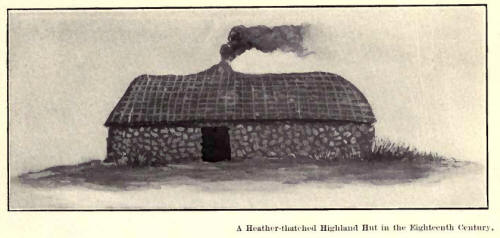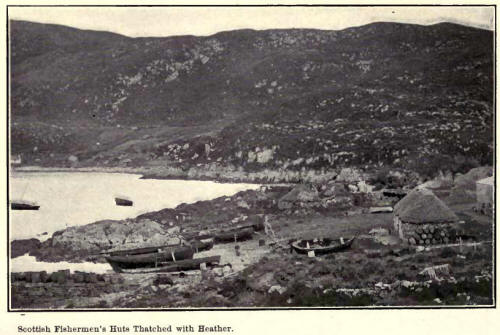|
The old English herbals contain several references
to the medicinal properties of Heather. "The tender tops and flowers,
saith Dioscorides, are goode to be laide upon the bitings or stingings
of any venomous beast;" and Gerarde adds, "The barke and leaves of Heath
may be used for and in the same causes that Tamarisk is used."
In Parkinson's "Theatrum Botanicum" (The Theatre
of Plants), published in 1640, occurs the following: "Heath is somewhat
drying and a little bitter withall, except the berryed sorts, as Clusius
hath related by the taste of most of them. Galen saith it hath a
digesting quality, resolving the malignity of humors, by transpiration
or sweating, which a decoction of the flowers being drunke, doth
perform, and thereby giveth much ease to the paines within the body, and
expelleth the worms therein also; the leaves and flowers made into a
decoction is good against the stings or bitings of serpents and other
venomous creatures; and the same being drunke warm, saith Mathiolus, for
thirty days together, morning and evening, doth absolutely breake the
stone and drive it forth; the same, also, or the destilled water of the
whole plant, being drunke easeth the chollicke; the said water or the
juyce of the herbe dropped into the eyes helpeth the weaknesse of the
sight: Clusius saith that Rondeletius at Montpelier used the oyle made
of the flowers of Heath with good successe against the Wolfe in the face
or any other foule or fretting and eating canker spreading over the
whole face; the same also doth dissolve tumours: a bathe made by
decoction of the herbe and flowers is good for them to sit in that are
troubled with the stone, or with the gout, for it giveth much ease to
their bath: the white berryes of the Heath, saith Clusius, are brought
to the markets in Spaine and


there sold to give to those that have hot agues,
to coole the heate and quench their thirst; and besides are much desired
saith bee, of women and children, to please their pallate; the honey
that the Bees take from the flowers of Heath is called Mel improbum, but
we have not found any ill quality therein in our Land; only it will be
higher coloured than in those places where no Heath groweth."
Doedens, in his "Historie of Plants," relates as
follows of the value of the Heath in lithotrity: "The learned Mathiolus
in his commentaries upon Dioscorides lib. j. doubteth not of this plant
but that it is the Erica of Dioscorides whereunto he bath set two other
figures of strange heath sent unto him by one Gabriel Fallopius, a
!earned physician. Moreover, he commendeth much the decoction of our
common heath made with faire water to be drunken warm both morning and
evening, in the quantity of five ounces, three houres before meat,
against the stone in the bladder, so that it be used by the space of
thirtie dayes; but at the last the patient must enter into a bath made
of the decoction of Heath and whiles he is in the said bath, he must sit
upon some of the Heath that made the foresaid bath, the which bath must
be oftentimes repeated and used. For by the use of the said bath and
dyet or decoction, bee bath knowne many to be holpen, so that the stone
bath come from them in very small pieces. Also Turner saith that for the
diseases of the Milt (spleen) it were better to use the barkes of Heath
(in steed of tamarisk) than the barke of Quickbene."
Lightfoot tells us that Bilberries or a decoction
of Heather roots in milk were given for diarrhcea and dysentery. A
spirituous extract of Heather roots was given for sea scurvy.
|
